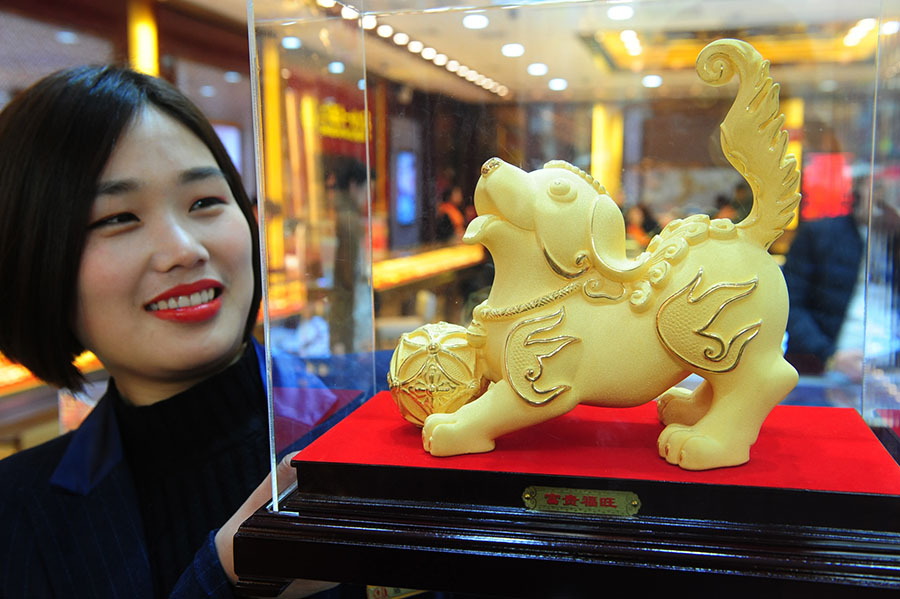2018-02-07 09:26:44
China Daily

Wang Lixin, managing director of the WGC in China, said that annual demand in China last year was 8 percent higher than in 2016, comfortably above its five-year average of 284.8 tons.
"Looking at jewelry demand, China's 6 percent growth year-on-year in the sector in the fourth quarter heavily contributed to a 3 percent rise in annual jewelry demand-the first yearly increase since 2013," Wang said.
Consumption within China's gold jewelry market rose 3 percent year-on-year to 646.9 tons in 2017, data from the WGC show.
The country's overall gold consumption rose 9.41 percent to 1,089 tons last year, making the country the world's biggest gold market for the fifth year running, according to Beijing-based China Gold Association.
Wang said the trend for lower-weight, better designed, higher-margin premium gold jewelry products continued to gather momentum. Also in 2017, China harnessed more cutting-edge retail technologies, such as augmented reality and virtual reality.
"With the addition of AI-enabled tools, we believe the outlook for Chinese jewelry demand is positive," said Wang.
"The shift in taste has pushed the industry to upgrade, as many Chinese jewelry producers have already adopted machines with computer-controlled programs to design not only 18-karat, but also 24-karat gold products for better and more personal designs," said He Jingtong, a professor of business at Nankai University in Tianjin.
"Coupled with ongoing urbanization and rising domestic demand, powered by the Chinese government's measures to shift the economy to an internal consumption-driven model, the market potential in the Chinese mainland, particularly in lower-tier cities, continues to be attractive to jewelry retailers of all sizes," said Yang Lixin, director of the gemological training center for China's National Gem and Jewelry Technology Administrative Center.
The China Gold Association said the country's gold output dropped 6 percent to 426 tons in 2017, but it still retained its position as the world's biggest producer for the 11th consecutive year.
The country adopted new rules in 2016 to raise environmental requirements on solid waste from gold prospecting, leading to a wave of gold mine closures and output declines in the major producing provinces, including Shandong, Jiangxi and Hunan.